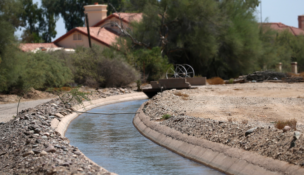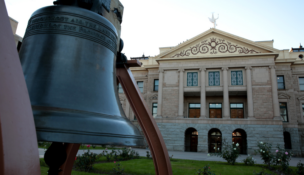Tucson falls short of downtown revitalization
Arizona Capitol Reports Staff//November 9, 2007//[read_meter]
Tucson falls short of downtown revitalization
Arizona Capitol Reports Staff//November 9, 2007//[read_meter]
Tucson and Albuquerque started out in much the same way.
Both were hubs of commerce and the center of life in their states in the 1940s, 1950s and early 1960s, and both fell into disrepair after urban renewal leveled parts of their central cores in the 1970s.
But now there’s one big difference between them — since both redoubled their downtown revitalization efforts in 1999, Albuquerque has pulled ahead of Tucson in terms of activities and amenities, nightlife and first-class lodging.
And that’s despite the fact that Tucson got more than $100 million in state money for revitalization efforts, a pot that overflowed to $600 million in 2005.
Albuquerque didn’t have that luxury. It had to go to voters each time to approve funding for specific projects, like an increase in the gross-receipts tax to pay for an aquarium and several small bond issues to expand museums.
Albuquerque accomplished much of its renaissance by offering developers tax breaks and low-cost loans, as well as with private investments and fundraising.
Cities are mirror images
“The two cities are mirror images of each other in many ways,” said Charlie Gray, executive director of the Greater Albuquerque Innkeepers Association, and former manager of what is now the Hotel Arizona in downtown Tucson.
He said the cities have grown the same way, with downtowns ringed by historic neighborhoods, a midtown university, a south-side Air Force Base, and populations continuing to sprawl outward until hitting nearby mountains and crawling up the foothills.
And both cities’ ideas about how to fix downtown mirrored each other, including a convention-center hotel, an aquarium, a civic plaza, a museum district, condo projects to draw downtown residents, the revitalization of a historic theater and the construction of a new arena.
While all but one of those ideas are now a reality in Albuquerque, Tucson has had only one major project come to fruition, the Fox Theatre.
“I think they’ve done a great job with what they have had,” said Jaret Barr, project manager for Tucson’s Convention Center hotel search. “They had a real advantage. They truly had a commitment on the corporate, business and government sides. We didn’t have that type of commitment.”
Former Albuquerque Mayor Jim Baca said Albuquerque’s top business leaders were crammed into a room and told they couldn’t leave until they agreed to make a contribution to downtown revitalization.
He said the group collecting $250,000 that night.
To be successful, Baca said, a city must win over the private sector and must have the political leadership.
“Someone has got to make a priority and fight for it,” he said. “If you don’t, there are a million ways to stop it.”
Tucson City Manager Mike Hein said Tucson has fallen behind because it has lacked private sector and political leadership “coalesce.”
He also pointed to the practice of giving often no-bid deals to developers with little or no competition — projects that stalled once the deal with the city was locked into place, developing an attitude that city subsidies were entitlements needed to get anything done.
“It makes everyone lazy,” Barr said. “People have forgotten how they build things in other places.”
Copyright 2007 Associated Press. All rights reserved. This material may not be published, broadcast, rewritten or redistributed.
















